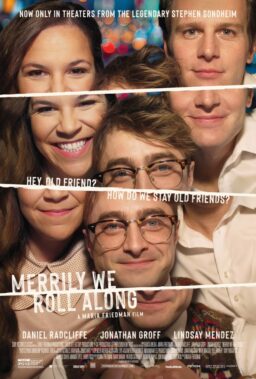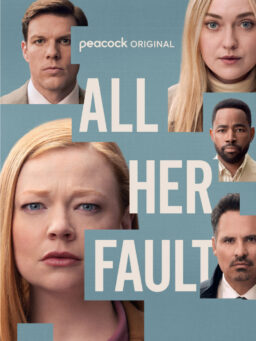New York – “I wanted to see it for the first time in a room all by myself,” Whoopi Goldberg was saying. “Nobody else would understand the things that would drive me crazy.”
The heartbreaking moments? The violence?
“Zits and eyebrows. I’ve never seen my self on the screen. I just sit there and freak myself out. Look at that zit! It is impossible to look at a movie the first time and really see the movie. Later, you get into the movie. The first time, it’s like a letter from camp. I’m thinking about how hot it was the day we shot a scene. I’m telling Steven Spielberg I have a wool coat on. And he’s telling me, ‘Shut up! I don’t care! It works!’ You remember the experience of shooting the scene. Then, later, you can maybe step back and see the characters, get into the story, figure out if it’s a great movie or what.”
This is Whoopi Goldberg, the star of “The Color Purple.” Two years ago she was starring in her own one-woman show Off-Broadway. A few years before that, she was working in repertory theater in San Diego. A few years before that, she was working as a bricklayer and a mortuary cosmetologist. She refuses to tell anyone her real name, because she finds it boring. She originally changed her name to “Whoopi Kushon,” but decided that was a bit much.
I am giving you these facts all at once because a lot of people will be curious about Whoopi Goldberg after “The Color Purple” opens on Friday. She gives one of the best screen performances I’ve ever seen, and she is just about a shoo-in for an Academy Award nomination. “Whoopi Goldberg for the Oscar!” Oprah Winfrey says. She co-stars in the same movie, and so is a little biased. “Who’s her competition? Meryl Streep? I don’t care if Meryl break-dances on water, this year it’s Whoopi.”
Meanwhile, the subject of these words is sitting cross-legged in a big chair in a New York hotel and lighting a Marlboro. She is wearing a pullover sweater that is several sizes too big and white painter’s pants. She says she has never thought about actually being nominated for an Oscar, but watching the Oscar show has been a very important ritual for her since she was this high, and her dream is to present one of the Oscars.
“I see myself, my fingers trembling, tearing open the envelope and saying, ‘The winner is…’ And then I see the winner hurrying onto the stage, all flustered and ecstatic, and I see myself standing back, out of the limelight, sharing that person’s moment of triumph, and then, when they’ve finished their speech, helping to escort them off the stage. That’s how I’ve always pictured it. Of course, everybody asks, ‘What are you going to wear?’ Last year, I was in the audience; I wore a white linen coat and bright orange Levis and a silk tie.”
“The Color Purple” centers completely on her Goldberg’s character, a woman named Celie, who is born near the turn of the century, and who spends a life of great suffering before finally finding a way to joy and happiness. Celie’s early years are a catalog of pain. She is twice made pregnant by her father, who gives away the children. She is married to a man who beats her, and who brings home and flaunts his fancy woman. She lives virtually like a slave until, miraculously, the fancy woman takes a liking to her and teaches her a few things she didn’t know, such as that sex can feel good, that tenderness is permitted, that she has a beautiful smile and that she should stand up for herself more often.
“The way I played Celie,” Whoopi said, “was to stand back from her. There’s a theory that an actor should identify with the character. Well, I loved her, but I didn’t identify with her. Celie is so far away from me, it was easy to allow her pain to be there, because her life has so little to do with mine.”
Whoopi Goldberg grew up in Manhattan. Her mother was a Head Start teacher. She went to Catholic schools. She started in acting workshops when she was 8. Maybe what she is trying to say is that the remarkable character of Celie is an actor’s performance, not some sort of mystical phenomenon where Celie is reborn inside her.
“I’ve tried to explain to a lot of interviewers that Celie has nothing to do with the black experience. It’s like, they were saying Celie is black and you are black and so you have all these things in common. Celie could be Oriental, Puerto Rican, and these same specific things could have happened to her. What is great about her story is how she finds out she is human. Also, the movie is not really about feminism, or lesbianism, despite the fact that Celie finds out about love and tenderness from another woman. Celie does not know there is another way. Men have always treated her the same. The only affection she has known came from her sister, until that other woman kisses her. It has nothing to do with lesbianism. It has to do with, her eyes are opened, now she understands.”
Whoopi giggled. “One guy asked me about this movie and the black experience,”’ she said, “and I told him I thought ‘Agnes Of God‘ was a great exploration of the white experience. Or ‘The Big Chill.’ You know, ‘The Big Chill‘ was more my story than ‘The Color Purple.’ But this movie is so much a deeper movie, a movie about the awakening of the human spirit.”
When she read Alice Walker’s novel, Whoopi said, she knew immediately that she wanted to be involved with any possible movie project. “I wrote her a letter and said I would do anything, if there was ever going to be anything done with her book. I would play any character. I would play dirt on the floor. I would be a screen door. She wrote back and said she knew who I was, she had seen my show in San Francisco, she had already mentioned me to Spielberg.
“Then Steven asked me to do my show before a few of his friends in Los Angeles. A few of his friends! Do you know who his friends are? There were 80 people in the room. Michael Jackson was there.”
After she got the role, she found that the thing she and Spielberg had in common was movies. “I grew up sitting in front of the tube. I learned about acting watching the ‘Million Dollar Movie.’ They’d have two weeks of Spencer Tracy, and he would be somebody different every day. That was acting. Spielberg would direct me in terms of movies we’d both seen. ‘Whoopi, this scene, it’s Claude Rains and Bogart at the end of ‘Casablanca.’
Which scene was that?
“Walking through the fields with Shug Avery. I was sort of a weird kid. Not very popular. I was into books and movies and hockey. This was the early 1960s. I wasn’t into stockings. I couldn’t dance. The subtle art of being a girl evaded me. Just in terms of being feminine, I wouldn’t wear dresses and get into legs and thighs and everything the other girls were obsessed with. I was me. I appreciate beauty in a man or a woman. I’m not gay, but a beautiful woman I can appreciate. People are always making suggestions to me. Like. ‘We love you, but why don’t you do this or do that with your makeup and you’d be a knockout.’ If they love me, why do they want me to change? I like the fact that I don’t wear makeup. That I can go anywhere and just be me. Once I put on a mustache and went around as a man. I make a very interesting man. Sort of like James Baldwin.”
Whoopi Goldberg says she leads a quiet life in San Francisco. She and her daughter spend a lot of time watching TV. Even though she is very successful now, she doesn’t have one of those giant-screen sets, “because some things are better left alone.” When she came to New York for the world premiere, the parties drove her crazy. She gets claustrophobic in a room with a lot of people: “There are too many places to look. And my eyesight’s not so great. Besides, I’m not a [partygoer]. I’m a gawker. I like seeing movie stars up close.”












